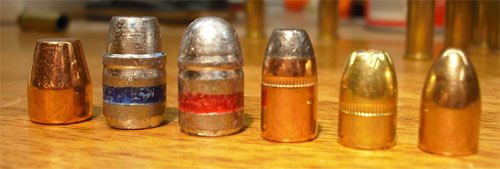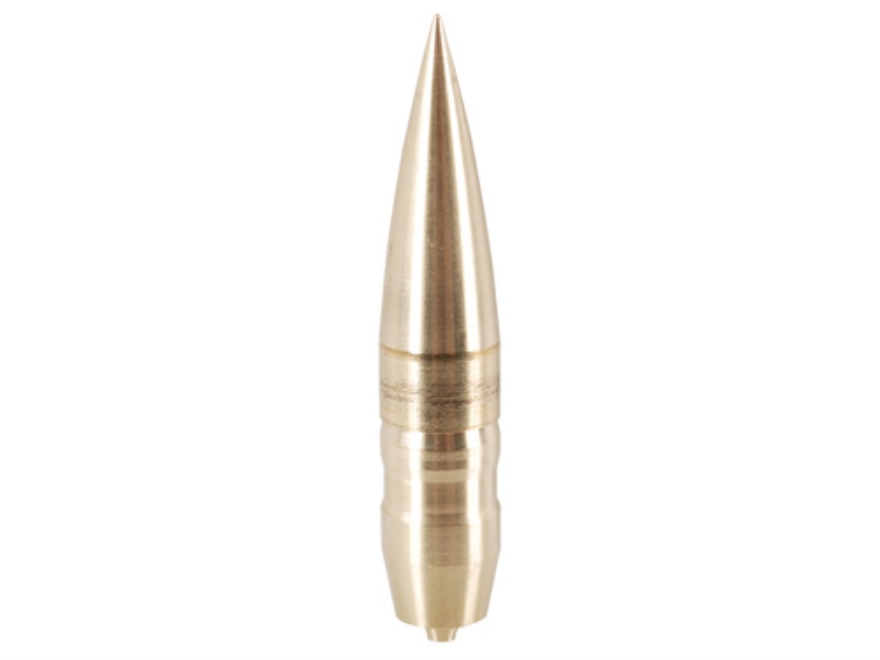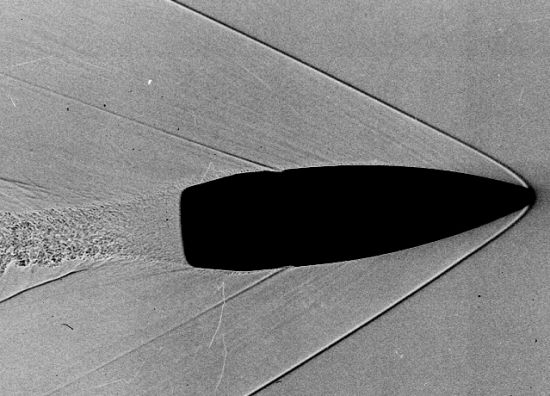Air and the Ballistic Coefficient
If you were considering just gravity before, adding air
makes the calculation of a firing solution exponentially
more complicated. Not only is it capable of exerting a
force on any object, even stationary ones, through wind, but
it also exerts a drag force on a flying bullet due to the
force the bullet exerts on the air. This is
generically known as Newton's 3rd Law of Motion.
The force of drag takes into account the object's density,
cross-sectional area, speed, and a constant specific to the
object in question, known as the drag coefficient. The
force is expressed by the following equation:
As you can see, the force is going to be most effected by
the speed due to it's square. Rifle bullets are
typically much faster than other types of bullets, such as
from pistols. Since drag force is undesirable and
rifles need to be accurate over long ranges, this equation
helps explain why extra attention is paid towards the design
of rifle bullets and reducing both the drag coefficient and
cross-sectional area. Though it should be noted that
reducing the area too much will lower the bullets
effectiveness against it's target. The design of these
projectiles can get quite complicated given all the
different performance characteristics a shooter needs.

A comparison showing various pistol bullets against the
highly-engineered .408 Chey Tac rifle bullet. Notice
the tapered rear end (known as boat tail) which
aerodynamically aids in reducing drag. Also note that
these two images are not to scale; the .408 is much larger.
In ballistics, the drag force and other aerodynamic factors
are simplified into a single concept known as the ballistic
coefficient (BC). This term is defined in layman's
terms by ballistician Bryan Litz as "the ability of the
bullet to maintain velocity, in comparison to a 'standard
projectile'." There are actually two standard
projectiles, called G1 and G7. G7 is considered more
accurate due to it being more similar to modern bullet
designs. In either case it is a unitless number.
The higher the number, the better the BC. This value
is calculated by the equations below. These equations
can only be used for small and large arms projectiles.
Where:
m = mass of bullet
d = cross-sectional diameter
i = coefficient of form
Where:
n = number of calibers of the bullet's orgive
Where:
l = length of the head in number of calibers
Just like bullet drop (and also a contribution to bullet
drop), BC is determined and provided by cartridge
manufacturers. BC is especially important as a
consideration when dealing with distances that risk the
bullet slowing down into the transonic zone, where stability
is dramatically decreased.

